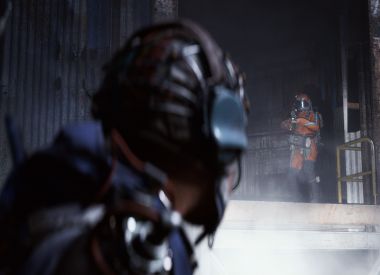“I was 12. It was pretty intense for a 12 year-old,” DC Comics Chief Creative Officer and Doomsday Clock writer Geoff Johns remembers of the first time he read Watchmen, starting with the Rorschach origin issue. “I just started reading comics in ‘84. So it was pretty new. It was a really intense and a new look at comics because I had been mostly reading Superman and Crisis, which was a whole other crazy type of comic book.”
“The mid 80s for DC was a really amazing time. There was nothing else like Watchmen on the stands. The impression it had on the world was undeniable. It influences you whether you wanted it to or not, and challenges you in ways not many comics do.”
Watchmen’s is so influential and beloved, any notion of messing with its legacy has become sacrilegious. Writing a Watchmen story, like he’ll do in Doomsday Clock when the 12 issue series hits shelves Nov. 22, was not something Johns expected to do.
“I'd never thought about it for a lot of reasons, not until a year and a half ago. I was writing the Rebirth special and I started to think about how, for me, DC is about heart, hope, heroes and humanity. And it felt like something had been ripped away,” Johns said at New York Comic Con.
“The humanity had been lost from the books, and Superman was my center character. So I thought, who would have the power, inclination or curiosity to try and test that removal of the humanity in the DC universe? And who would have the ability to do it? And I don’t know where it came from... but Doctor Manhattan and Superman," Johns said, still answering moderator Lev Grossman's question about the initial idea and premise of Doomsday Clock.
“Those characters are so -- You have one that’s an alien who is the most human of all superheroes and one who is a human and is the most alien out of all superhumans. A conversation between those two would be pretty amazing. I just wanted to hint at it, because it felt like a really cool, big idea people would think about.”
And he did hint at it. In Rebirth, Wally West realizes an entire decade of time is gone. Not because of Flashpoint created by Barry Allen, but because of a mysterious being he can feel inside the universe -- watching over, influencing not only his connection with the speed force but humanity itself, carrying the weight of worlds in his hands. In The Button, Batman gets involved. He and The Flash investigate the spooky mystery challenging the way they understand the universe. In Doomsday Clock, Johns’ goal is to bring the missing heartbeat back.
“The DC universe was missing those personal relationships and emotional storytelling. For me, there was a lot of flyby double page spreads of heroes fighting and I wanted to get back to the essence of these characters. That's what made me so interested in contrasting it with Watchmen because the aggregate of each universe is very, very different.”
These two worlds colliding is what sets Doomsday Clock apart from Watchmen and Johns is confident his pursuit of the story, even though many would consider touching Watchmen a sin, will pay off.
“We are not trying to repeat Watchmen,” Johns said. “It was more daunting to me as a writer, because I was like, if I do something like this I have to go to a place I've never gone. That challenge is what I love. When I was relaunching Teen Titans people said, ‘Why are you wasting your time? Those characters are terrible.’ I said, ‘I think you're wrong.’”
The story came to Johns during the 2016 presidential election and in December, he pitched Doomsday Clock to Gary Frank. The Superman illustrator, who Johns calls the most underrated in the industry, agreed to draw and that’s when the crazy idea became a reality.
“It’s taken a while to write because there is so much internal pressure and external pressure,” Johns said, explaining how he and Frank wanted to follow the Watchmen rulebook. “When you open the book, I wanted people to go, ‘That has an echo and reminds me of Watchmen.’ Just visually. It has to be based on a nine-panel grid,” Johns said. “The pacing of it is very particular; it’s character driven. It’s not about plot. What was important was the dialogue and how it works, and doesn’t work. The thematics and the subtexts and the other characters and the lived-in feel. The world feels like it’s been lived in. All that is in the [Watchmen] rulebook.”
Johns unveiled the first six pages of Doomsday Clock #1, which you can read here. The panels pose more questions than answers. But at the top of the list is the return or Rorschach, who Johns said was the most fun writing a character he’s ever had. Not only for the sense of humor, which Johns promises there is a lot of in the series, but also because of what Rorschach represents and the perspective he brings in contrast to the rest of the characters.
“This story is about extremes. I think the world has become an extreme world. You really love something or you really hate something. I think everyone is moving to extremes for a lot of reasons, so bombarded by thinking that you have to pick a side, and Rorschach is someone who refuses to do that which is why I love the character so much.”
For more on Doomsday Clock, check out the first six pages and covers for the second issue. Also read what you missed from the Doomsday Clock panel at San Diego Comic Con. What do you think so far? Let us know in the comments.


















